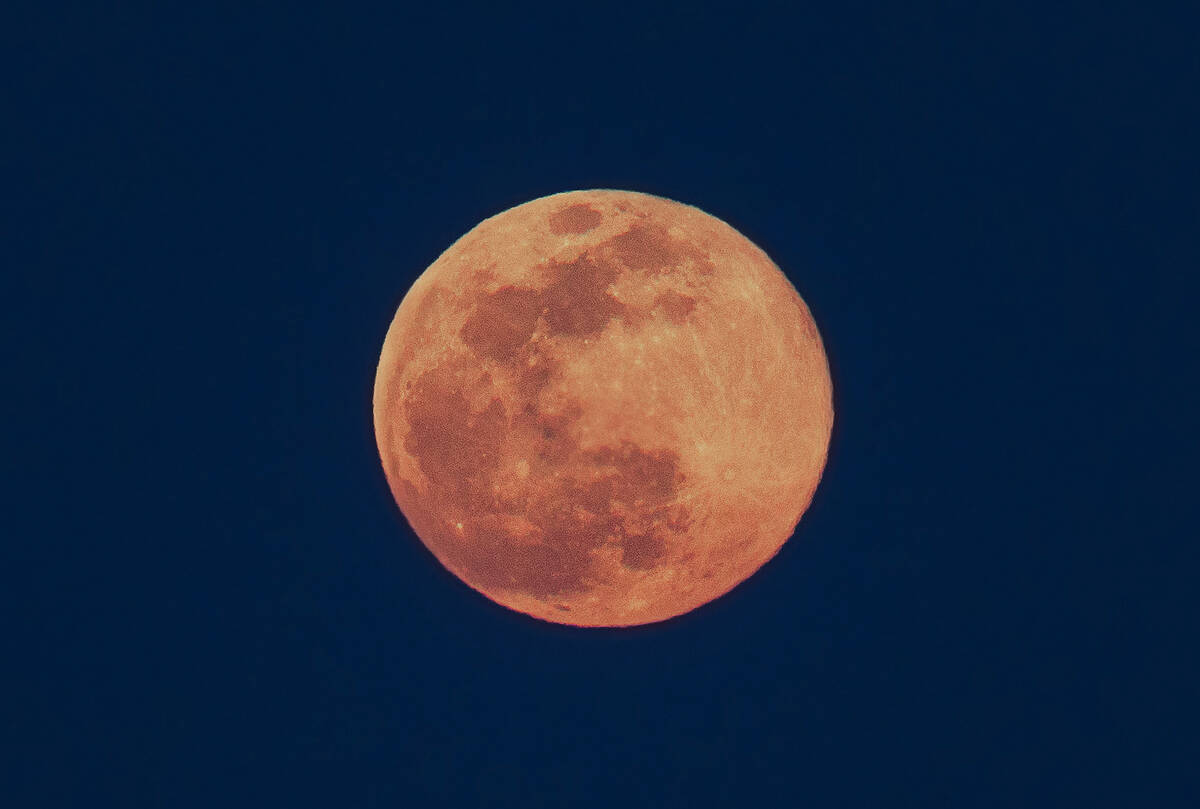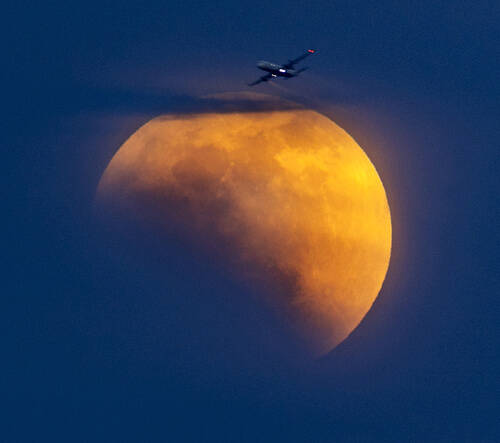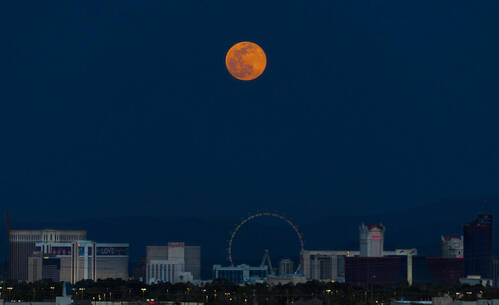Stargazers: June brings a supermoon and rare planet alignment
Eager stargazers will have a few opportunities to spot interesting objects in the night sky this summer, including supermoons and a rare five-planet alignment.
On Tuesday, the second of four supermoons in 2022 will appear, so-called when a full moon is especially close in its orbit to the Earth. The best time to look will be shortly after sunset, around 8:50 p.m., when the moon rises in the southeast near the horizon, creating the optical illusion that it is super-sized.
Clear skies are forecast next Tuesday, meaning Las Vegas Valley residents should easily be able to spot the supermoon and avoid a repeat of last month’s cloudy lunar eclipse.
As the moon continues its rise in the sky, however, the unknowing onlooker might not discern much difference between other full moons.
Andrew Kerr, planetarium manager at the Dale Etheridge Planetarium in Las Vegas, says despite the name, “it’s hard to notice the larger size without a telescope.”
There are around two to four supermoons each year that appear in consecutive months, depending on the definition used. Many science outlets say the season began with the full moon on May 15, and that in addition to June’s moon, there will be two more this year: one on July 13 and another on Aug. 11. Others say that only the June and July moons will count.
So how does a full moon earn the supermoon distinction? Typically, the moon has to come within about 90 percent of its perigee, the point at which it is closest in orbit to the Earth. Because the moon doesn’t orbit the Earth in a perfect circle, there are times when it is closer or further away. When it’s both full and especially close, it can qualify as a supermoon. Different sources might use slightly different thresholds, so there isn’t always agreement on which moons get to be super.
In addition to the supermoon, those who live on the east side of the valley should also be able to see a rare planetary alignment that hasn’t occurred since 2004.
Five planets (Mercury, Mars, Venus, Jupiter and Saturn) will align on the eastern horizon about a half-hour before sunrise throughout much of June. Peak viewing will be on June 24.
Dark Sky, stargazing locations
Light pollution and sprawling valley growth make celestial viewing more difficult.
Jerry Stein, vice president of the Las Vegas Astronomical Society and a city resident for almost 20 years, says that light pollution from the Strip and recent development have gotten “demonstrably worse.”
He also says the full moon will be so bright that it will be a source of light pollution in its own right. He suggests that people interested in gazing at non-lunar objects should head out at least several days after any full moon. “It just obliterates everything else in the sky close to it,” he says.
Luckily, people can find dark sky viewing not too far from the city. Etheridge says, “If you go a half-hour outside of Vegas in almost any direction and put your back to the city, you’ll get a pretty good view.”
Stein’s go-to spots for stargazing near the city are an overlook south of the entrance to Red Rock Canyon and the 33 Hole Overlook at Lake Mead. All you need to see the stars is your eyes, or maybe a pair of binoculars.
The astronomical society also offers free monthly “star parties” at nearby destinations such as Mount Charleston, Red Rock Canyon, Lake Mead and Valley of Fire. Attendees can look through telescopes and receive “guided tours” of the night sky from members.
If you don’t want to leave the city, the Dale Etheridge Planetarium offers weekly planetarium shows at 6, 7 and 8 p.m. on Friday and Saturday evenings and at 3:30 p.m. on Saturday afternoons. After the 8 p.m. shows, visitors can use a telescope to scan the night sky.
Serious stargazers can make the trek to one of the International Dark Sky destinations in the region. These include such national parks as Death Valley, Zion, Grand Canyon, Great Basin and Bryce Canyon, as well as the Massacre Rim Dark Sky Sanctuary in northwest Nevada. These locations are certified Dark Sky destinations because they have little light pollution and provide ideal viewing conditions.
Colton Poore is a 2022 Mass Media reporting fellow through the American Association for the Advancement of Science. Email him at cpoore@reviewjournal.com or follow him on Twitter @coltonlpoore



















